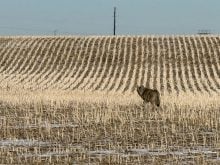You’d think the price of canola and other oilseeds would fall when the United States Department of Agriculture increases its forecast of U.S. soybean production by 2.4 million tonnes.
But last week’s USDA report did not depress oilseed prices and indeed 2010-11 might prove an exciting year for oilseed growers, including Canadian canola producers (as long as they can get well into September without a major frost).
Most of the concentration was on USDA’s wheat numbers.
But zooming in on soybeans, we noted an increase in exports offset the increase in production, so there was no monthly change in 2010-11 U.S. ending stocks, although at 9.8 million tones, they are more than double 2009-10 stocks.
Read Also

Agritechnica Day 2: The future of tractor power, building quicker crop apps and large farms and tech
Agritechnica Day 2: The future of tractor power, building quicker crop apps with Syngenta and large farms and tech
Exports this summer have been hot, thanks to Chinese demand.
The U.S. crop is still in its pod filling stage and hot dry weather in the southern part of the growing region threatens to sap yields.
And the next round of crops in South America is uncertain because of La Nina settling into the Pacific.
La Nina tends to bring dry weather in the fall to Argentina and often brings unusually cool weather to southern Brazil and Argentina in December through February.
That could hurt Argentina’s wheat crop, due for harvest in December, and could affect soybean seeding in Argentina and Brazil in September and October.
Early private forecasts put Brazil’s coming soybean crop at about 67 to 70 million tonnes, compared to 69 million last year. USDA forecasts a 65 million tonne crop in Brazil and 50 million in Argentina, down from 54.5 million.
If they do run into weather problems, it could boost oilseed prices and make for an interesting and profitable winter of sales for Canadian canola growers.














